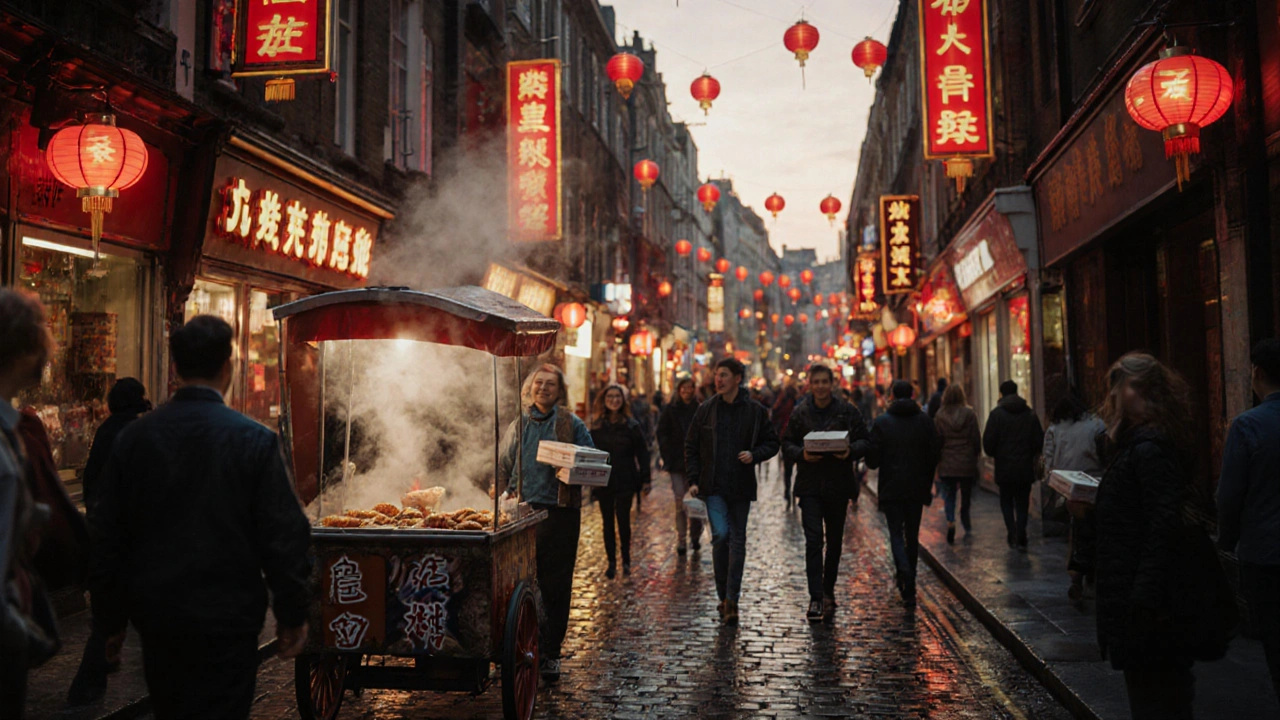Chinatown Food Recommendations – London’s Best Eats
When exploring Chinatown London food, the vibrant mix of traditional Chinese dishes and modern twists found in London’s Chinatown district, you’re stepping into a culinary playground that’s fed locals and tourists for decades. Also known as London’s Chinese food hub, it offers everything from street‑side snacks to upscale banquet rooms.
Key Flavors that Define the Scene
The heart of any Chinatown visit is dim sum, small, steamed or fried bites served in bamboo baskets, usually enjoyed with tea. From shrimp har gow to pork siu mai, the variety mirrors the region’s diversity. Dim sum isn’t just food; it’s a social ritual that encourages sharing and conversation. Next up, the iconic Peking duck, crispy‑skinned roast duck sliced tableside and wrapped in thin pancakes with hoisin sauce. A proper duck comes with lacquered skin, tender meat, and a side of scallions – a must‑try for anyone hunting authentic flavors.
For spice lovers, Chinatown London food delivers a punch with Sichuan hot‑pot, a bubbling broth loaded with chilies, Sichuan peppercorns and a mountain of raw ingredients to cook at the table. The ritual of dipping thinly sliced meat, tofu, and fresh veggies into the fiery broth creates a communal experience that’s both daring and comforting. Beyond these headline dishes, the area is peppered with Chinese bakeries offering mooncakes, egg tarts and sesame buns that satisfy a sweet tooth while staying true to tradition.
Why do these dishes matter? They act as entry points to deeper cultural stories. Dim sum tells the tale of Guangdong’s tea‑house culture, Peking duck reflects imperial Beijing cuisine, and Sichuan hot‑pot showcases the bold, numbing flavors of western China. Understanding each dish’s origin helps you choose the right spot: a sleek, contemporary venue may excel at modern dim sum twists, while a tucked‑away alleyway might serve the most authentic Peking duck you’ll find outside China.
Location matters, too. The main stretch of Gerrard Street houses flagship restaurants that attract tourists with polished interiors and English‑language menus. A few minutes away, hidden lanes like Lisle Street hide family‑run joints where the menu is handwritten and the service feels like visiting a relative’s home. Both settings have their perks – the former offers consistency, the latter delivers raw authenticity.
When you plan your visit, think about the experience you want. If you’re after a quick bite, street stalls serving jianbing (Chinese crepes) or steamed buns are perfect for a lunch break. If you have a whole evening, reserve a table for a multi‑course banquet that includes dim sum, Peking duck, and a hot‑pot finale. Most places provide set menus that balance price and variety, and many offer early‑bird discounts that let you sample more dishes without breaking the bank.
Don’t forget the beverage pairings. Traditional jasmine tea rounds out dim sum, while a crisp Chinese lager or a glass of baijiu can elevate the hot‑pot heat. Some modern eateries even experiment with craft cocktails infused with lychee or ginger, bridging the gap between East and West.
Below you’ll find a curated list of articles that dive deeper into each of these food categories, share hidden‑gem restaurant picks, and give practical tips on timing, budgeting and etiquette. Whether you’re a first‑timer or a seasoned Chinatown explorer, the collection will help you navigate the flavors, spots and stories that make this district a must‑visit culinary destination.
Your Go-To Guide for the Best Food in Chinatown London
Discover the ultimate guide to Chinatown London's food scene: top dishes, best eateries, price ranges, safety tips, and a handy comparison table for dim sum, Peking duck, and hot pot.






